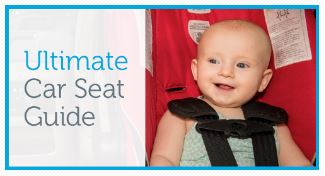Put Safety First Before You Hit the Road
Suitcases? Check. Snacks? Check. Safety restraints? Not so fast...
As families hit the road for travel or even a trip to the grocery store, adhering to proper safety restraint guidelines should be at the top of everyone’s checklist.
Motor vehicle crashes are one of the leading killers of children, contributing to these sad statistics is the fact that nearly a third of children ride in the wrong restraints for their age and size and four out of five child safety seats are used incorrectly.
Many of the most devoted parents are surprised to learn that they are putting their children at risk when restraining them in the car. While parents dutifully fasten babies and toddlers in child safety restraints, they must take the additional step of ensuring that the restraining device is age and weight appropriate and installed correctly.
What’s more, many people allow their children to graduate from their booster seats to the back seat – and even more perilously – the front seat of a car with air bags long before they should.
Here’s what parent should know about safely restraining children of varying ages before pulling out of the driveway:
Car Seat Safety Tips
Use a rear-facing seat for newborns and toddlers. Infants and toddlers should ride rear facing for 2 years or more to reduce the risk of cervical spine injury in the event of a crash. To protect a rear-facing child’s head from injury, the top of his/her head should be at least one inch from the top of the child safety seat’s shell.
-
Never use a rear facing child seat with an active frontal air bag. The force of a deploying air bag could result in serious injury or death.
-
Route the harness straps at or below shoulder level for rear facing children.
-
Adjust the harnesses so they are snug and flat against the child’s body, and position the harness clip at armpit level. An adult should not be able to pinch excess harness at the child’s shoulders (if able to, this indicates the harness is too loose and therefore needs to be pulled tighter).
-
If your child safety seat has a handle, follow the manufacturer instructions for positioning it.
-
Follow the manufactures’ level indicator to ensure proper recline is achieved. If allowed to do so by the manufacturer, a pool noodle or tightly rolled towel may be placed at the bite of the seat as per manufacturer instruction.
-
Read both the child safety seat instructions and the vehicle owner’s manual for correct use and installation.
Use a forward facing seat with a harness for children over 2 years old and who have outgrown the maximum recommendations of their rear-facing seats through at least 65 pounds.
- Use a forward-facing child safety seat (convertible or forward-facing only), with harnesses and place it in an upright position, according to manufacturer directions.
- Route the harness straps according to the manufacturer instructions, generally at or above shoulder level, using reinforced slots for forward-facing children.
- Adjust the harnesses so they are snug and flat against the child’s body, and position the harness clip at armpit level. An adult should not be able to pinch excess harness at the child’s shoulders (if able to, this indicates the harness is too loose and therefore needs to be pulled tighter).
Use a belt positioning booster for children over 65 pounds and who have outgrown the maximum weight and height limits of their forward-facing harnessed car seat.
- If the child cannot sit with his or her tail bone against the seat, with knees bending naturally over the edge of the seat, then they should use a belt-positioning booster seat.
- Route the vehicles’ lap and shoulder seat belt over the child and through indicated seat belt path on the booster seat. Note: Booster seats can only be used with both lap and shoulder seat belt systems and cannot be used with lap only seat belt systems.
Use a vehicles seat belt system once the child is tall enough to fit the seatbelt system.
- Once the child can sit with his or her tail bone against the seat, with knees bending naturally over the edge of the seat with the shoulder belt snug and flat against the collarbone and chest and with the lap belt snug and flat against the upper thighs (not stomach).
- If any of the fittings listed above are incorrect; the child might want to scoot up, place the shoulder belt behind or underneath an arm this can result in serious injuries in a crash. This would indicate the child still needs a booster seat.
All children ages 12 and under should always ride in the back seat using an age appropriate restraint.
Parents should register their car seats so as to get advised of recalls, additionally parents can check recent recalls for car seats.
Note: As of November 2018, The American Academy of Pediatrics (AAP) updated recommendations on car seats to guide parents as to when to make seat transitions.
For complete guidelines from Safe Kids Worldwide, visit the web site at http://www.safekids.org/.
